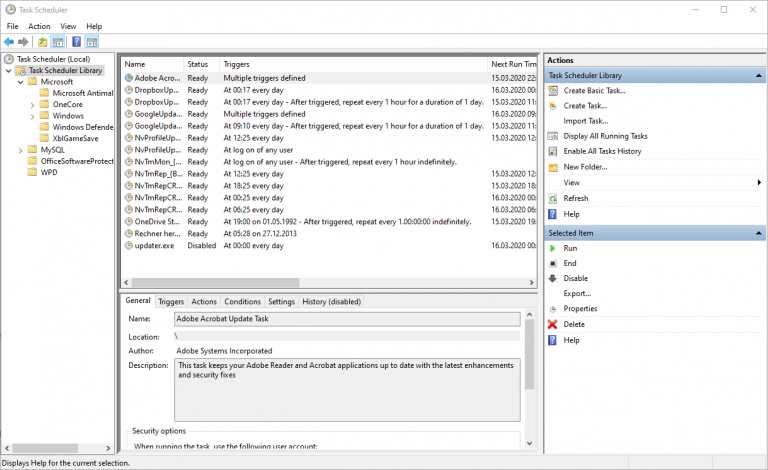
It is therefore always good practice to provide an absolute path to scripts and output files to avoid any confusion and cluttering.
#Cron job schedule creator how to#
Users can use a specified structure to put up a Cron job to handle code or other instructions right away.’ How to create a cron scheduler in. Cron scans for previously established procedures and files in the crontab (Cron tables). Especially if the users also belong to countries that follow Daylight Savings Time practice. The Cron kernel is a built-in Linux feature that allows users to schedule the execution of programs on the system. This could be troublesome if jobs are being scheduled on servers with multinational personnel using it. And what’s even cooler is that you don’t need to restart cron after creating new files or editing existing ones. The command for creating and editing cron jobs is the same and simple. All cron jobs are scheduled in the local time zone in which the system where the jobs are being scheduled operates. The crontab is the method you use to create, edit, install, uninstall, and list cron jobs.There are a few things to keep in mind before scheduling cron jobs: This will schedule our Python script to run every 2 hours. Where $(USER) can be replaced with your username.

You might be prompted to select an editor, choose nano and append the following line to the end of the opened crontab file: * */2 * * * /home/$(USER)/my_script.py cron is a UNIX tool that has been around for a long time, so its scheduling capabilities are powerful and proven. To do that, simply enter the following in the terminal: crontab -e To schedule our script to be executed, we need to enter the crontab scheduling expression into the crontab file.

The crontab scheduling expression has the following parts: This will send a notification as the message “drink water”. We can test our script if it is working properly. Assuming we have saved this script as my_script.py under our home directory, we can make it executable by entering the following command in our terminal: $ sudo chmod +x my_script.py Note: #!/usr/bin/python3 (specifying the path of script interpreter) is necessary if wish to make the script executable. Taking multiple inputs from user in Python.



 0 kommentar(er)
0 kommentar(er)
